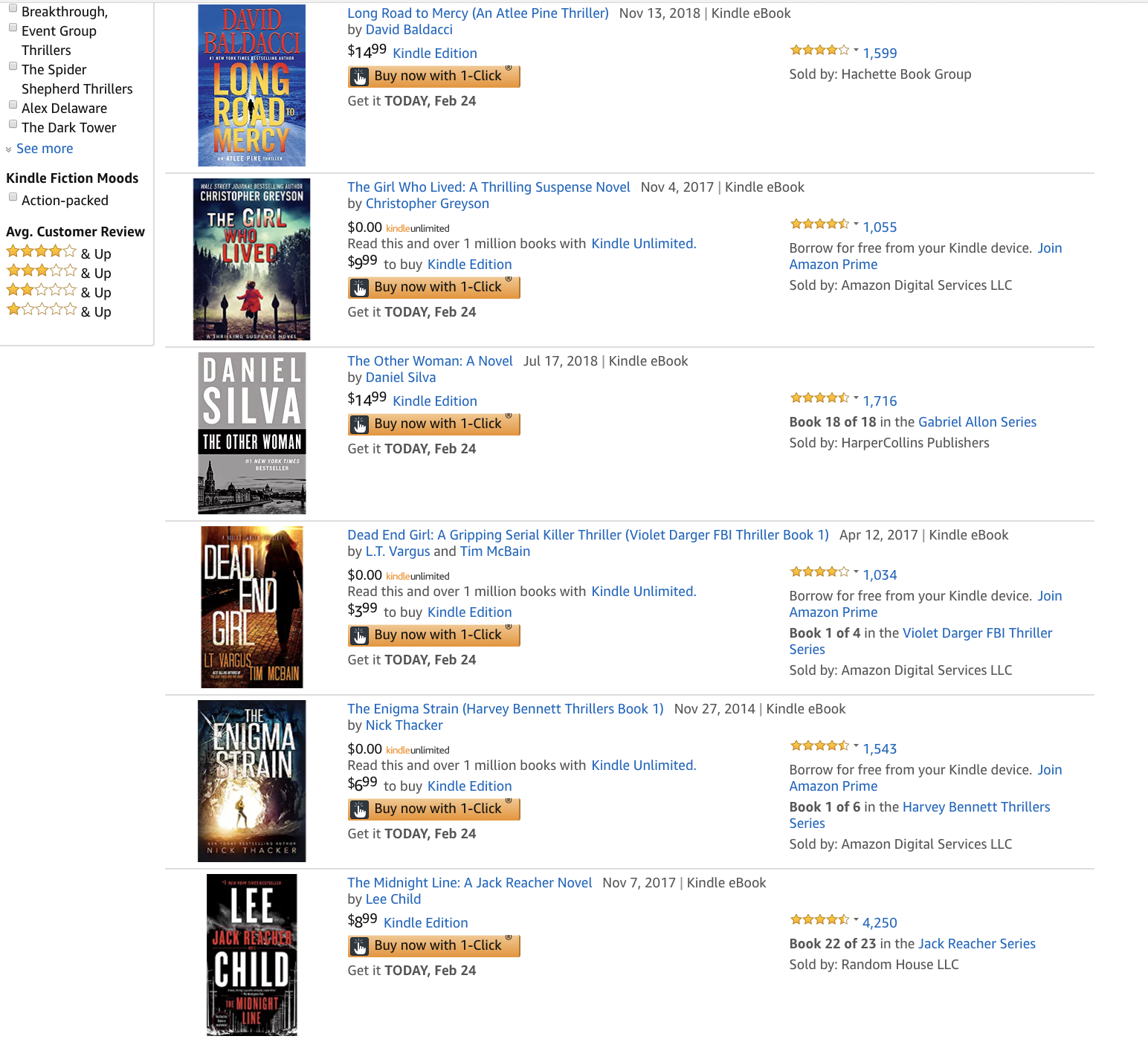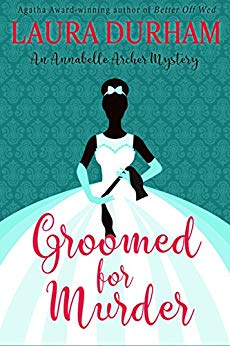In my last post, I talked about the most important creative talent an indie author should add to her publishing team: the editor. This time, we’ll look at the creative in a close second position. That’s the cover designer.
If your editor helps you get your manuscript ready for public consumption, your cover designer entices its consumption. Independent publishing relies on savvy marketing, and your cover is your first chance to attract a browsing reader. When you’re competing against literally millions of books in the digital marketplace, your cover must make the right impression in a matter of seconds to attract that potential reader. If you’re trying to get your book into brick-and-mortar stores, a quality cover design can make the deal. A poor, unprofessional design will definitely break it.
A professionally designed cover can help get your book into brick-and-mortar bookstores or land promotions like BookBub featured deals.
Clearly, having a talented cover designer on your publishing team increases your odds of success. In order to find one, we first must understand what design delivers.
Good Cover Design Conveys Three Things: Genre, Target Audience, and Expectations
Readers consume books in a given genre because those stories meet certain needs. In the mystery/thriller/suspense genre, there’s a puzzle to be solved, with a sense of threat driving the tension in the story. In the romance genre, two people overcome obstacles to find the relationship they’ve been longing for (there’s always a happy ending). Fantasy promises detailed imagined worlds, supernatural elements, and often a battle between good and evil.
While indie publishing permits cross-genre fluidity that’s great for storytellers, when it comes to marketing your book, it pays to be conventional. Book sellers (whether brick-and-mortar or digital) need to know what your book delivers without having to read it. Your cover design conveys all of this in a glance, and helps them get your books in front of the right audience.
Head over to Amazon and search in either their Books or Kindle Store departments for “thrillers.” Notice anything in common with these thumbnails?

- Titles are huge, in a standard or compressed sans serif font like Helvetica. If the author’s name is a famous one, it’s in a type size nearly equal to (or maybe even larger than) that of the title. The bold and stark style of the title, in high contrast to the background, promises an intense read.
- Covers have dark backgrounds, which communicate a sense of danger or dread.
- People tend to be in silhouette, further enhancing a sense of mystery.
- Cover images tend to be photographic, rather than illustrations.
These common features are called genre conventions, and they signal subconsciously to your target audience that the story within meets certain expectations. Who do you think might be the target audience for the thrillers shown in the photo?
Genre conventions differ by subgenre
The problem with genre categories is that they can be quite broad. While you can count on certain similarities between stories in a genre, their content, tone, and style can vary widely. Readers might like one flavor of story in this genre, but not another. That’s where subgenres come in.
Contrast the thriller covers above with the cozy mystery genre, which features amateur sleuths. The stories in this subgenre typically have less gore than their mainstream counterparts, and are often funnier and less threatening in tone. Cozy mystery readers tend to be women over forty. The covers use illustrations in bright and cheerful colors to appeal to this market segment, and the title fonts tend to be more playful than in the traditional mystery/thriller genre in order to convey the books’ lighter tone.




Books in this subgenre typically are written in a series and built around a theme. Laura Durham’s Annabelle Archer Wedding Planner series offers a terrific example of subgenre-appropriate covers that speak to a well-defined target audience. The backgrounds feature bright colors. The title appears in a playful and feminine handwriting font, but the figure on the cover (always a bride) is in silhouette, with a murder weapon in her hands. Book titles in this genre often contain some sort of pun element to further convey the light or humorous tone, as Laura’s done in her 12-book series.
Subgenre conventions can get quite specific, but understanding these nuances is important. Readers often want to read something like the last book they enjoyed, and they’ll browse for a book that looks similar. Ignoring the cover conventions of your target market wastes readers’ time and your money, so do your homework and follow the conventions. Doing so conveys your professionalism as an author and a businessperson.
Okay, but aren’t those details my designer’s job?
Yes, but they’re yours, too. As the publisher of your book, you must understand how cover design impacts marketing in order to identify competent designers, select the best one for your project, and direct them in order to achieve specific aims.
How to Find and Hire a Cover Designer
Now that you understand how cover design impacts marketing (and therefore sales), you’re ready to find a professional. Start with books in your genre or subgenre whose covers appeal to you. Is the cover designer credited anywhere on the copyright page or in the author’s acknowledgments? If so, run a search on that person and get in touch. Just as with hiring an editor, services like Reedsy or KBoards can connect authors with creative professionals.
Once you’ve identified several prospective designers, review their websites or Reedsy profiles. You should be able to review a portfolio of other work they’ve done. Do you notice any common themes in their work? Do they obey the genre conventions you’ve studied and absorbed? Do the moods and tones evoked by the designs match the mood and tone of your work? If so, you’re on the right track. If you’re reviewing a designer’s portfolio and they don’t seem to have worked in your genre, or you can’t get a clear sense of what a book’s content might be, it’s time to move on.
A good designer will employ a genre’s conventions but will also be able to make different authors’ books stand out from one another. If the designer’s portfolio shows multiple covers for a single author, those covers should have a consistent look and feel. This contributes to a sense of the author’s brand identity. In a future post, we’ll talk in detail about how to work with a cover designer to get the results you want.
As with hiring any professional, do your due diligence. Check references, and always sign a contract. It will protect both of you in case of a dispute. Services like Reedsy include a contract and facilitate payment, but you will pay a surcharge for the convenience.
A Word About Cost
Be prepared to pay several hundred dollars for quality custom cover design from a skilled professional. It’s an investment that will pay dividends in strong book sales. But what if you’re operating on a shoestring budget?
Here’s a little tip: Many times, when designers work up cover concepts for an author, he or she will propose three different prospective covers. The author selects one and together the author and designer refine and revise it to achieve the final design. What happens to the other two concepts? Sometimes designers offer those pre-crafted designs at a discount on their websites. You may not be able to tailor them other than changing the title and author name, or for an additional fee you may be able to make modest revisions. These off-the-shelf options come at steep discounts to custom covers and may get you a nearly-bespoke design at a price you can afford.
If even that fee is too steep, see if you can trade services with someone who’s skilled in graphic design. Could you proofread their manuscript or write their promotional copy in exchange for a cover? Don’t be tempted to use the numerous make-it-yourself cover design tools offered online. You get what you pay for, and your sales will reflect it. If you choose to proceed with a bargain-basement design, be prepared to upgrade the minute you can afford to. You won’t regret the decision.
The cliche says a picture is worth a thousand words. Nobody’s going to read that much promotional copy. Your cover’s got to do the talking to entice readers to take a closer look. A talented and experienced cover designer is your front line in the book marketing war, helping you to target the readers you want and communicate how your book will meet their needs. Understanding genre conventions is an important step in identifying a professional who’s a good match for your project. Designers’ services don’t come cheap, but they’re an investment that will pay dividends over the life of your book.

Helen J. Darling writes contemporary women’s fiction. Her first novel, I’ll Know Me When I Find Me, was self-published in January 2018. You can connect with her at itshelendarling.com and on Instagram at @itshelendarling.







